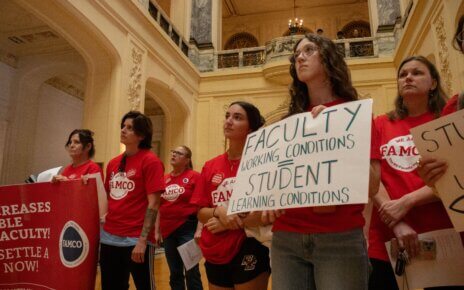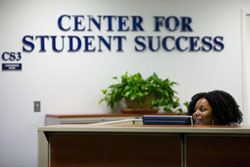What Makes Monmouth a Green University?
 The University is trying to create a more sustainable environment for future generations. Distinguished by The Princeton Review in 2012, the University is now one of the most environmentally responsible colleges in North America.
The University is trying to create a more sustainable environment for future generations. Distinguished by The Princeton Review in 2012, the University is now one of the most environmentally responsible colleges in North America.
Three hundred and twenty-two institutes were chosen as 2012’s Green Colleges because The Princeton Review determined they each had a “strong commitment to sustainability in their academic offerings, campus infrastructure, activities, and career preparation.”
Tony MacDonald, Director of the Urban Coast Institute, said, “While there is a long way to go in making the campus fully sustainable, the campus has made great strides over the past five years.”
The University’s major accomplishments relating to a more sustainable environment have enabled the recognition. MacDonald mentioned that the University has experienced significant energy reduction through the use of solar panels, implementation of single-stream recycling systems, and the cooperative agreement the University has with the Environmental Protection Agency (EPA).
“Monmouth entered into the Voluntary Agreement with the EPA because we believe that the University has an obligation to educate students beyond the classroom so that they can assume leadership positions in their community, regardless of what they do,” Patricia Swannack, Vice President for Administrative Services, said. “Higher education should not be complicit in the destruction of the environment.” Swannack said the collaboration allows the campus to regularly share their development with the EPA. She explained that a semi-annual report in accordance with the EPA gives the University the opportunity to measure the efforts achieved and assist the campus in setting the right goals.
The installation of solar panels on different campus buildings was also a significant step toward a greener campus. Bey Hall, Boylan Gymnasium, the Rebecca Stafford Student Center and the Facilities Management Building are now equipped with 454 kilowatt solar photovoltaic systems, according to the University website. “The system was the largest installation at an institution of higher education east of the Mississippi River when it began producing electricity in September of 2005,” according to the University’s website.
“I definitely agree with the claim that Monmouth University is environmentally responsible,” Brett Gilmartin, senior and President of the Environmental Club, said. “However, steps can always be taken to secure a greener future,” he added. “Some ideas that would allow the campus to rise on the environmental playing field would be to create a system of reusable to-go boxes, use energy efficient products in dorm rooms, create energy from gym cardio machines, enforce separation of garbage and recycling in dorm rooms and academic buildings and reduce the constant landscaping.”
Gilmartin discussed that one of the actions that may have led to a sustainable campus is the use of miser machines in some of the University buildings, such as the Student Center. These machines allow students and faculty to be rewarded for recycling. Gilmartin explained that a card is used for the machine, and each time an individual recycles he or she obtains points on the card towards discounts at local stores.
The Princeton Review made the decision to recognize the University as a “Green College” in agreement with the U.S. Green Building Council (USGBC), a national nonprofit organization. In 2010, USGBC created a Center for Green Schools with a focus on creating new, more environmentally proficient ways to develop and operate campuses around the nation.
The Center for Green Schools’ website stated, “By promoting the design and construction of green schools, and by greening the operations and maintenance of existing schools, we can make a tremendous impact on student health, school operational costs and the environment.”
“High-performing schools result in high-performing students, and green schools go far beyond bricks and mortar. We see an opportunity to educate a new generation of leaders – sustainability natives – capable of driving global market transformation,” according to The Center for Green Schools’ website.
Various statewide campuses are also recognized on the list of Green Colleges, such as Montclair State University, Rider University, Rowan University, and the Richard Stockton College of New Jersey.
PHOTO COURTESY of Blaze Nowara



